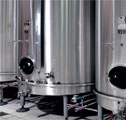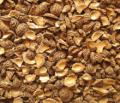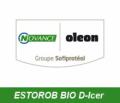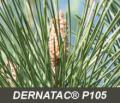

Date of publication :
December 2013
Updated April 2016
Looking for a bio-based custom-made solution and would be accompanied to take up a collaborative project?
Contact IAR cluster
In the framework of a sustainable development, bio-based products are on the rise! In 2010 the European market volume for bio-based products represented € 28 billion, this amount would reach € 57 billion in 2020 (source: European Commision, 2013).
A product is qualified as bio-based when its origin - partial or total - is vegetable (eg crops, wood, algae) or animal (eg fats). Distinguished by their origin, these products now cover a wide range of applications.
This report, focused on products of plant origin, shows examples of applications suitable for local authorities and environment business.
Examples of applications for your projects
|
|
Bio-based products exist for the maintenance of equipments ... … DETERMEX 100 is a multi-purpose cleaner that deep cleans and makes disappear completely grease, oil, tar, dust, traces of gasoline and oil, mold and other stubborn deposits. ... The disinfectant detergent Salveco cleans and disinfects all surfaces, its patented formula does not stain and is not irritating (dermatologically tested). In 2009, the biodegradable lubricant DIESTERLub CSL 150 for chainsaws was chosen to be used on the entire French territory in the framework of a European tender offer of the National Forestry Office (ONF). |
|
|
The building sector has bio-based products, including both conventional products, such as timber frame, and innovative products like Ecorenfort - based on flax fibers - for joinery. Insulation products based on natural fibers (hemp, flax, wood, cotton) today help ensure heat and sound insulation for collective or individual buildings... ... The semi-rigid panels UniverCell® - based on cellulose fibers - are dedicated to acoustical panels distribution, crawling, dubbing thermal wall. ... Métisse®[eko] BAFFLE is a panel of non-woven material that acts as a sound absorber, designed for professional sound proofing (meeting rooms, concert halls, recording studios, etc.). For landscaping of homes, plastic-wood composites (WPC) are now available for decking. |
An upcoming issue will detail the range of bio-based products available for building sector.
|
|
Paints incorporate increasingly bio-based ingredients with products less impacting on the quality of indoor air, as Géopur, a decorative paint for indoor use, based on renewable raw materials (from sunflower oil harvested in EU area), petroleum -based VOC free. |
|
|
Bio-based products are now available to fit out soils. Biodegradable mulch mats - like FibriMat Mulch mat - are intended for green spaces and horticulture sector. Biogranulats® replaces any gravels of mineral origin for the gritting of outside spaces within the framework of environment-friendly landscaping. |
|
|
Some bioproducts allow to overcome constraints related to the difficult winter conditions in the transport ... ... LESSSALT is a melting agent which reduces about 80% the use of salt for the snow clearing of the road. The product is composed of 50% plant residue and 30% minerals and 20% salt in compliance with the standard NF - P98 - 180. ... Estorob BIO D-Icer is a de-icing fluid which avoids the premature wear of airplane carbon brakes. The roadworks find solutions in bio-based products. Companies propose binders for the production of asphalt, as the product DERNATAC® P105. It is used to provide a high quality equivalent to the oil-based binders for asphalt used in insulating coatings or roads. |
Bio-based and product origin
A bio-based product does not mean it is 100% derived from biomass. It is common to have various origins in a product (fossil, mineral, plant or animal) to take advantage of each constituent.
The choice of material is indeed based on three main motivations for industrials:
- Optimize costs and vary its supply to always be competitive if market fluctuations,
- Get new features and properties,
- Reduce environmental footprint.
Incorporation rate
The rate of incorporation of bio-based materials depends on the family of products and existing technologies. Certain classes of products are actually more advanced in terms of incorporation of bio-based materials. For this reason it is important to integrate this parameter in the analysis of bio-based content.
How bio-based content is measured?
Today there is no legal framework to define accurately a bio-based product, whether in terms of definition or in terms of bio-based content measurement.
One of the most widely used methods is based on the calculation by percentage weight (or volume) of the various components of a product to assess its bio-based content.
To communicate with their customers, manufacturers also use independent analyzes (via a third party), on the content of bio-based carbon and the content of other elements from biomass (oxygen, nitrogen, ...) of their products.
Normative framework
At European level, several standards, technical specifications and reports have recently been published on bio-based products. These documents cover the vocabulary (EN 16575: 2014), the life-cycle assessment (EN 16760: 2015), the bio-based content (EN 16785-1: 2015), the sustainability criteria (EN 16751: 2016), the bio-based carbon content (CEN / TS 16640: 2014), the methods for determining the bio-based content (CEN / TR 16721: 2014), and the requirements and methods related to bio-based solvents (CEN / TS 16766: 2015).
All these documents were made in the framework of the technical commitee CEN/TC 411 Bio-based products.
Not to be confused
It is important to note that the origin of a product does not predict anything in its environmental impact: renewability, toxicity, end of life, greenhouse gas emissions, energy consumption during the manufacturing etc..
The life cycle analysis here is a tool for industry to assess the potential environmental impacts and to judge at best the product, from its design to its end of life.
It is also important to distinguish the manufacturing process and the origin. For example, a product cannot be considered as bio-based if it is obtained by fermentation of a fossil substrate by a microorganism.
Written by J. BAUSSET & A.-S. HERVIEUX, IAR cluster
Reference: Bio-economy and sustainability: a potential contribution to the Bio-economy Observatory, page 39, European Commission, 2013
Photos/graphics credits: Kurhan - Fotolia.com (report's logo), Fotolia (pictures 1&9), Mexel (2), Salveco (3), Sofiproteol (4), Maxim_Kazmin - Fotolia (5), Innobat (6), Soprema (7), Le Relais (8), rfsole - Fotolia (11), EcoTechnilin (12), Phytovalor (13), Franck Boston - Fotolia (14), WhiteSnowFree (15), DRT (17)


















